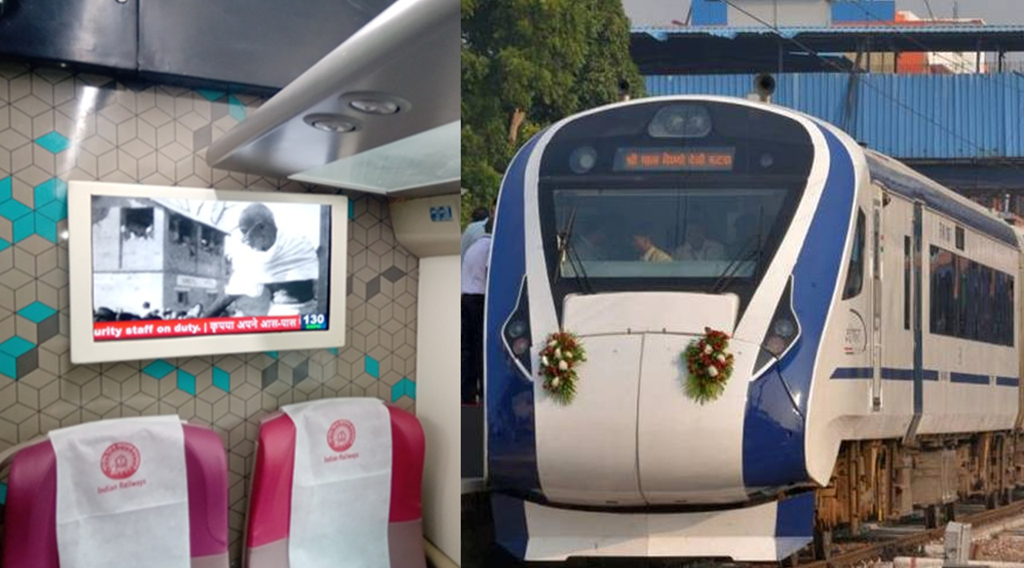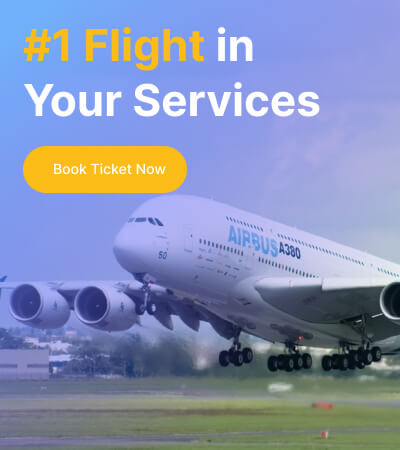The Vande Bharat Express has emerged as a flagship project of Indian Railways, a symbol of modernization and technological advancement in the country’s transportation sector. These semi-high-speed trains, known for their swift travel times, modern amenities, and sleek design, have revolutionized inter-city travel. However, with this premium service comes a premium price tag, and the Vande Bharat Train Ticket Price fare is a frequent topic of discussion among travelers. This article delves into the nuances of Vande Bharat’s pricing structure, exploring what dictates the cost, the differences between its classes, and the overall value proposition for passengers.
Understanding the Vande Bharat Fare Structure
The ticket price of the Vande Bharat Express is not a flat rate but a dynamic figure influenced by a variety of factors. Unlike traditional trains where fares are relatively fixed, Vande Bharat fares are benchmarked against other premium services like the Shatabdi Express, and they often include a catering component. The fare is primarily determined by:
- Distance of the journey: This is the most significant factor. Longer routes naturally have higher fares. For instance, a trip from Delhi to Varanasi, covering over 750 km, will have a higher fare than a shorter route like Chennai to Coimbatore.
- Class of travel: The Vande Bharat Express primarily offers two classes of travel: the Executive Chair Car (EC) and the Chair Car (CC). The EC is the premium class, offering a more luxurious experience, while the CC is the more affordable option. This distinction is a major determinant of the final ticket price.
- Catering Charges: A unique feature of Vande Bharat trains is that the ticket price is inclusive of catering charges. The menu is often more elaborate than what is offered on regular trains and varies depending on the journey duration and class. This built-in cost contributes to the overall fare.
- Dynamic and Seasonal Pricing: While Vande Bharat trains do not have the same dynamic pricing model as airline tickets, prices can fluctuate based on demand and the time of booking, particularly during peak seasons, holidays, and weekends. Booking in advance is almost always recommended to secure a seat, as they tend to sell out quickly.
A Tale of Two Classes: Executive Chair Car vs. Chair Car
The most significant choice a Vande Bharat passenger has to make is between the Executive Chair Car (EC) and the Chair Car (CC). This decision directly impacts both the price and the overall travel experience.
Chair Car (CC): The Standard for Excellence
The Chair Car is the more economical of the two options, but it is far from a basic travel class. The CC coaches feature a 3×2 seating layout, providing comfortable and ergonomic seating for a large number of passengers. The seats are well-cushioned and offer adequate legroom for a comfortable journey. All CC coaches are fully air-conditioned and equipped with modern amenities, including individual charging points, infotainment screens, and a GPS-based passenger information system. The windows are large and sealed, providing an excellent view of the passing landscape. The amenities provided, such as clean bio-vacuum toilets and automatic doors, are consistent across both classes. The catering in CC is functional and satisfying, typically including hot meals, snacks, and beverages served at appropriate times.
Executive Chair Car (EC): The Pinnacle of Rail Travel
For those seeking a more premium and luxurious journey, the Executive Chair Car is the clear choice. The EC coaches are designed for a more exclusive experience, with a 2×2 seating configuration that provides wider seats and significantly more legroom. A standout feature of the EC is the 180-degree rotatable seats, allowing passengers to face the direction of travel or to interact with a group. The enhanced comfort and space make it ideal for business travelers or anyone on a long journey. The catering in the EC is more elaborate, often starting with a welcome drink and offering a wider variety of menu options, served in multiple courses. The cabin is also noticeably quieter, contributing to a more tranquil travel environment.
The price difference between the two classes is substantial, with the Executive Chair Car typically costing 50% to 60% more than the Chair Car. This higher fare reflects the added comfort, space, and premium service, making it a viable alternative to air travel for many inter-city routes.
The Price of Progress: A Comparison with Other Trains
While Vande Bharat’s fares are higher than conventional express trains, they are often competitive with, and in some cases, less expensive than short-haul flights. The true value lies in the unique blend of speed, comfort, and convenience it offers.
- Speed: Vande Bharat trains significantly reduce travel time compared to traditional express trains. A journey that might take 10-12 hours on a regular train can be completed in 6-8 hours on a Vande Bharat, saving valuable time for both business and leisure travelers.
- Convenience: Unlike air travel, Vande Bharat trains depart from and arrive at city-center railway stations, eliminating the need for time-consuming and often expensive airport transfers. The check-in process is also much quicker and less cumbersome. The integrated catering and on-board amenities also contribute to a hassle-free journey.
- Reliability: Indian Railways has a strong reputation for punctuality, and Vande Bharat trains are designed to further enhance this. The engine-less design with driver cabins at both ends allows for quick turnaround times at terminals, improving operational efficiency.
Specific Route Fares: A Snapshot
To provide a clearer picture, let’s examine some sample fares for popular Vande Bharat routes. It’s important to note that these are representative figures and may vary slightly due to real-time fluctuations.
- New Delhi-Varanasi: A journey of approximately 750 km.
- Chair Car (CC): Around ₹1,760
- Executive Chair Car (EC): Around ₹3,310
- Mumbai-Gandhinagar: A journey of approximately 520 km.
- Chair Car (CC): Around ₹1,285
- Executive Chair Car (EC): Around ₹2,465
- Secunderabad-Visakhapatnam: A journey of approximately 700 km.
- Chair Car (CC): Around ₹1,665
- Executive Chair Car (EC): Around ₹2,940
- Chennai-Coimbatore: A journey of approximately 500 km.
- Chair Car (CC): Around ₹1,365
- Executive Chair Car (EC): Around ₹2,515
| Route | Distance (Approx.) | Chair Car (CC) Fare (₹) | Executive Chair Car (EC) Fare (₹) |
| New Delhi – Varanasi | ~770 km | 1,760 – 1,815 | 3,310 – 3,355 |
| Mumbai – Gandhinagar | ~520 km | 1,285 – 1,307 | 2,131 – 2,465 |
| Secunderabad – Visakhapatnam | ~700 km | 1,665 – 1,675 | 3,120 – 3,170 |
| Chennai – Coimbatore | ~500 km | 1,365 – 1,400 | 2,485 – 2,515 |
| New Delhi – Shri Mata Vaishno Devi Katra | ~655 km | 1,665 – 1,700 | 3,055 – 3,100 |
| New Delhi – Amb Andaura | ~415 km | 1,105 – 1,240 | 2,240 – 2,300 |
| Mysuru – MGR Chennai Central | ~500 km | 1,200 – 1,365 | 2,485 – 2,610 |
| Nagpur – Bilaspur | ~413 km | 1,075 – 1,155 | 2,065 – 2,150 |
| Howrah – New Jalpaiguri | ~560 km | 1,565 – 1,620 | 2,825 – 2,900 |
| Mumbai – Solapur | ~455 km | 1,150 – 1,300 | 2,225 – 2,500 |
| Bhopal – New Delhi | ~700 km | 1,735 – 1,800 | 3,185 – 3,250 |
| Ajmer – Delhi Cantt. | ~428 km | 1,250 – 1,300 | 2,270 – 2,350 |
| Meerut – Varanasi | ~782 km | 1,915 – 1,950 | 3,525 – 3,600 |
| Patna – Ranchi | ~380 km | 1,230 – 1,280 | 2,200 – 2,250 |
| Jaipur – Udaipur | ~435 km | 1,115 – 1,150 | 2,000 – 2,050 |
| Puri – Howrah | ~502 km | 1,245 – 1,290 | 2,100 – 2,150 |
These figures clearly illustrate the premium on convenience and comfort. The fare for a longer journey, like Delhi to Varanasi, is comparable to a last-minute flight, but the Vande Bharat offers a more relaxed and scenic travel experience.
The Future of Vande Bharat Pricing and Service
Indian Railways is continually expanding the Vande Bharat network, with new routes and services being introduced regularly. The future may also see the introduction of sleeper-class Vande Bharat trains for long-distance, overnight journeys, which will have a new fare structure with AC First Class, AC 2-Tier, and AC 3-Tier options. This development will further diversify the pricing model and cater to a wider range of travelers. The fare for a Vande Bharat sleeper service from New Delhi to Srinagar is projected to be around ₹2,000 for AC 3-Tier, ₹2,500 for AC 2-Tier, and ₹3,000 for AC First Class.
Conclusion
The Vande Bharat Express, with its sleek design, advanced technology, and world-class amenities, has redefined rail travel in India. Its ticket price is a reflection of the premium service it provides, offering a compelling blend of speed, comfort, and convenience. While the fares are higher than traditional trains, they are strategically positioned to compete with short-haul flights and provide a superior alternative for inter-city travel. The choice between the Chair Car and the Executive Chair Car allows passengers to tailor their travel experience to their budget and preferences, making the Vande Bharat Express a versatile and transformative addition to India’s railway network. As the network continues to grow, it is set to become an increasingly integral part of the country’s travel landscape, offering a glimpse into the future of rail transportation.









Leave a Reply